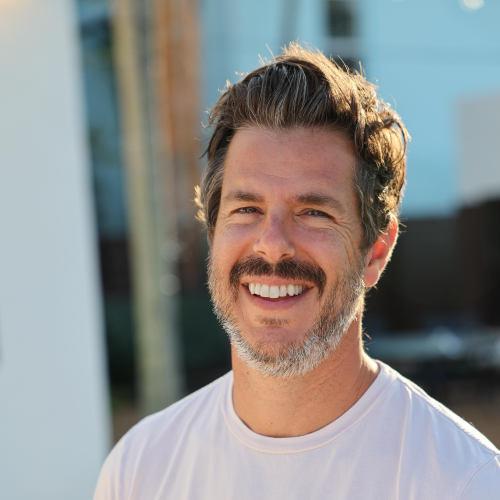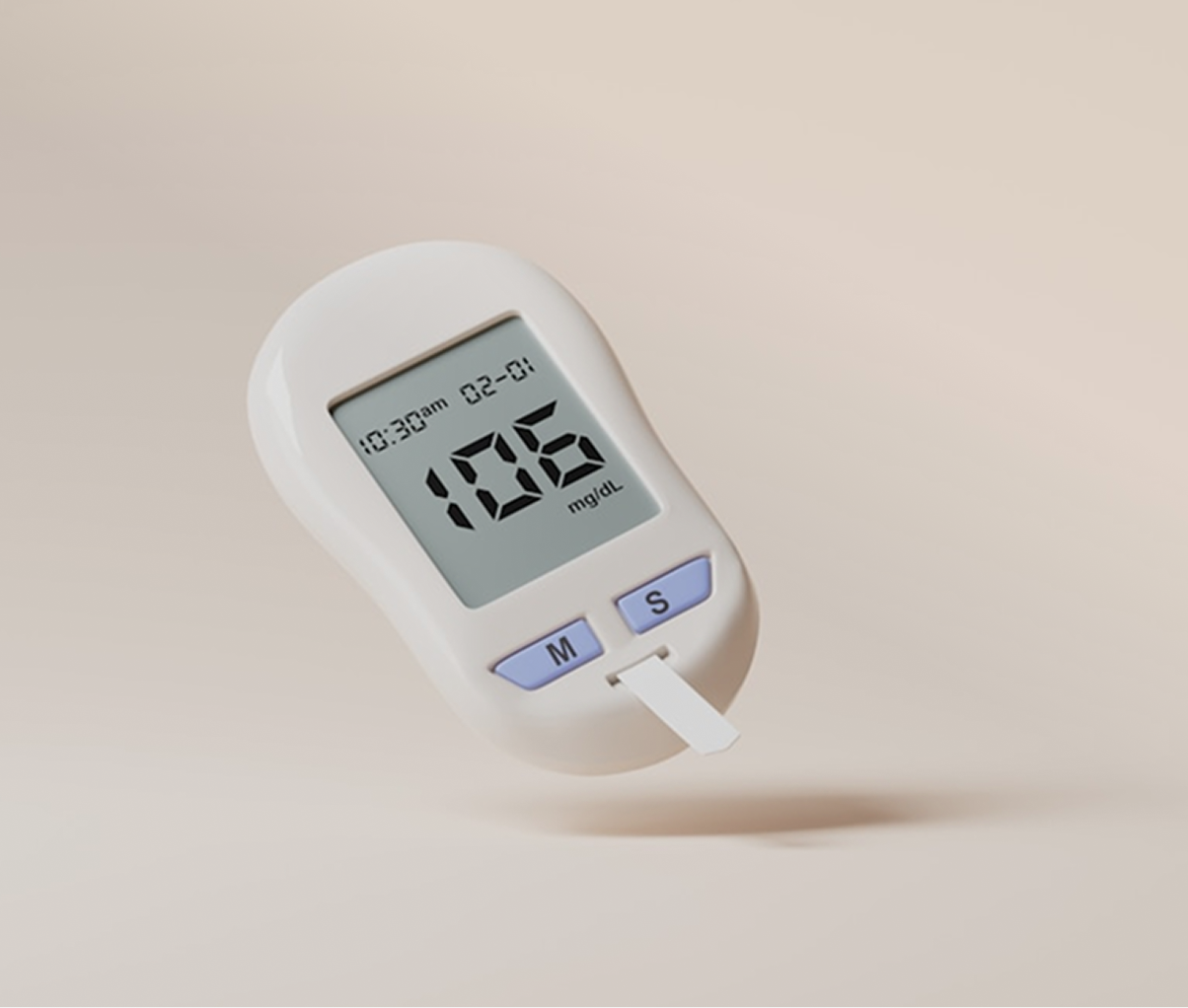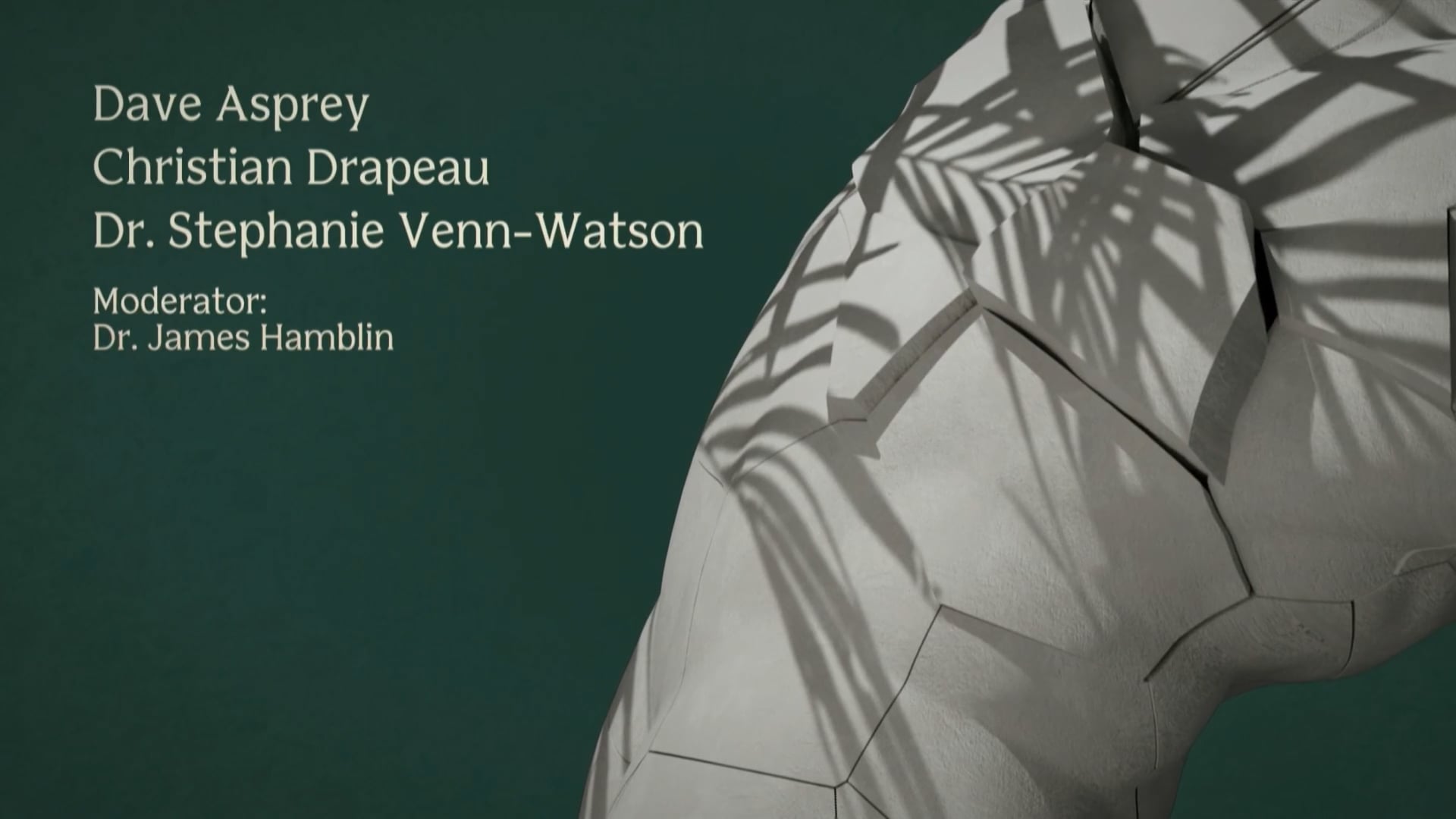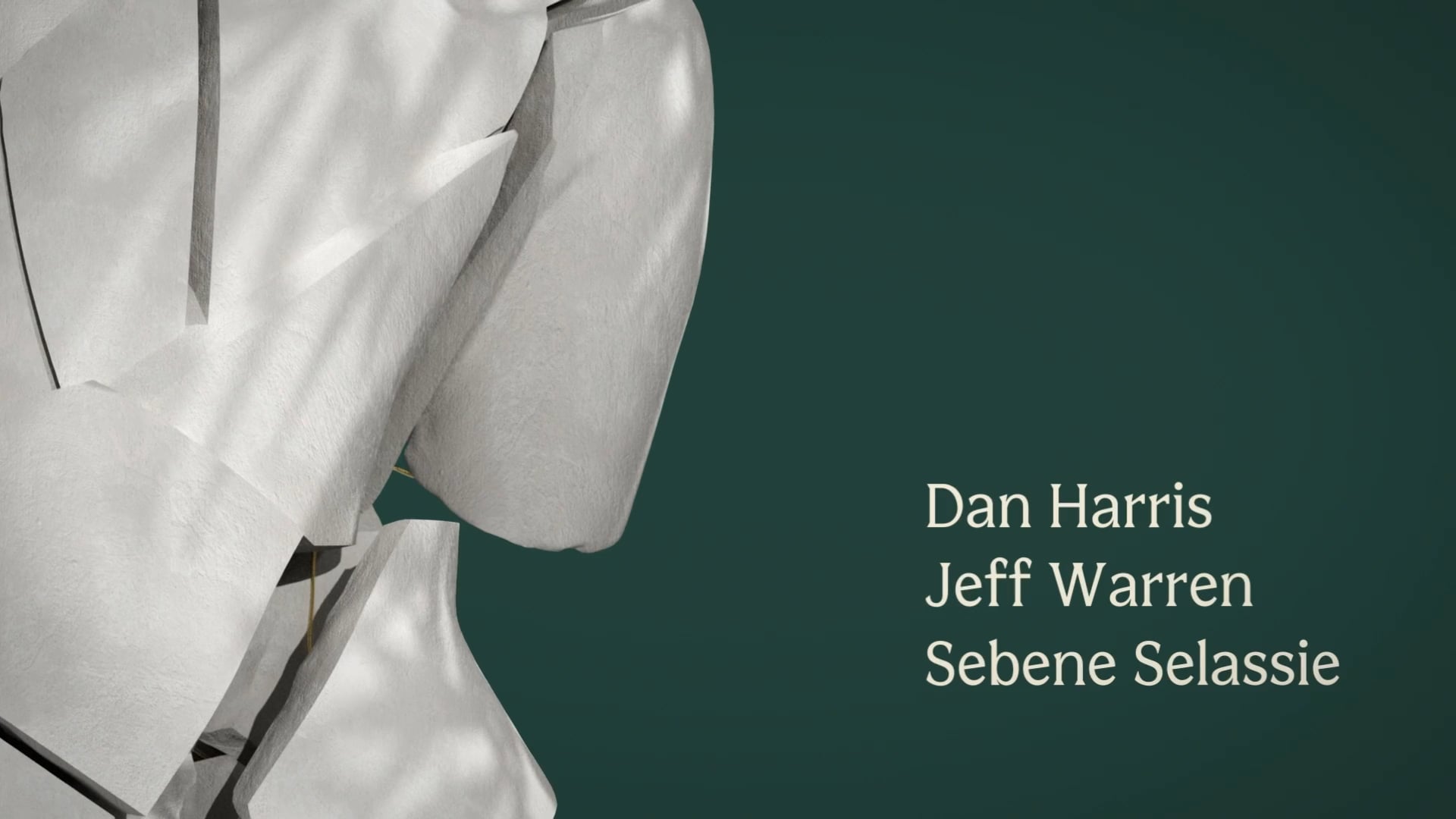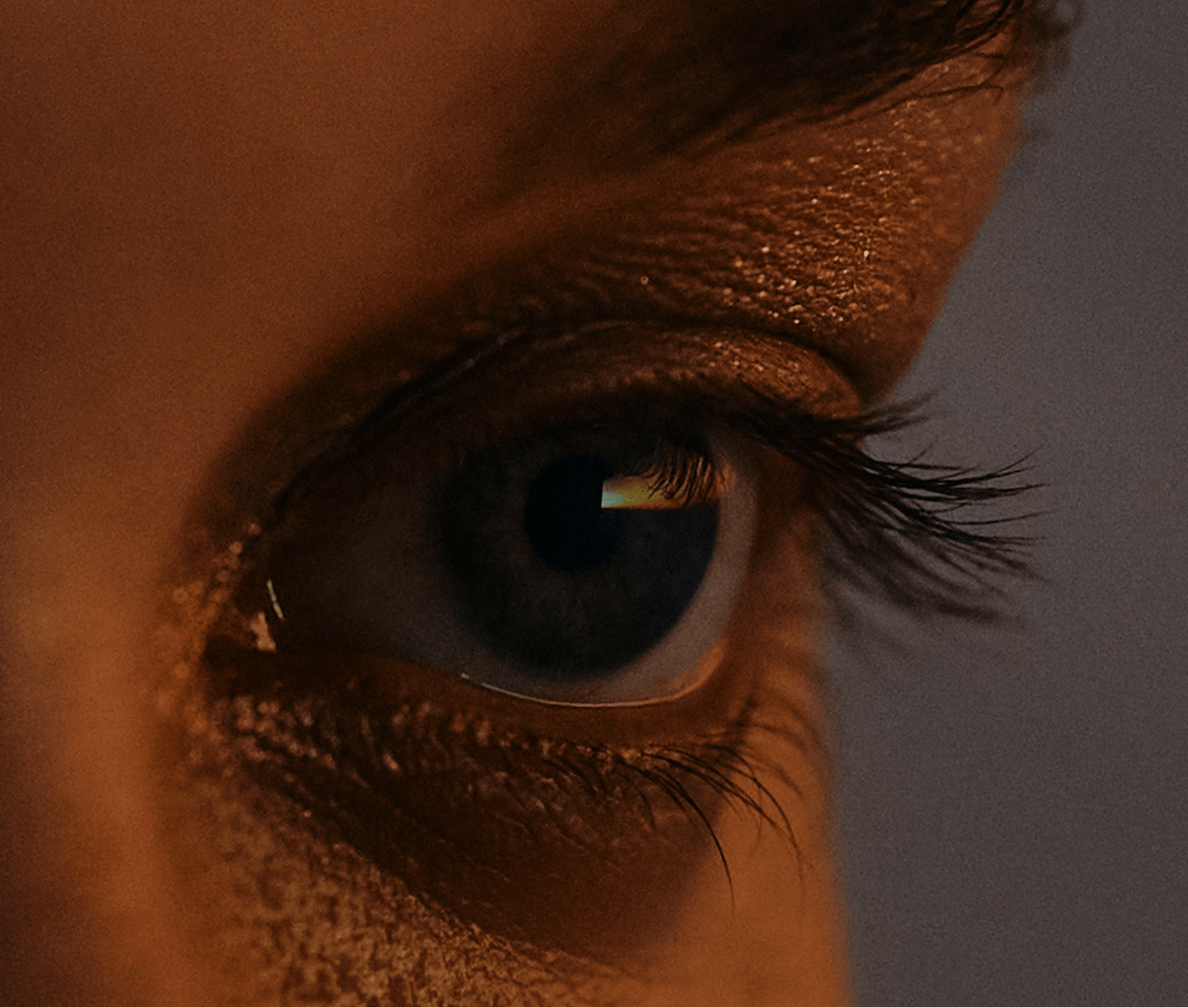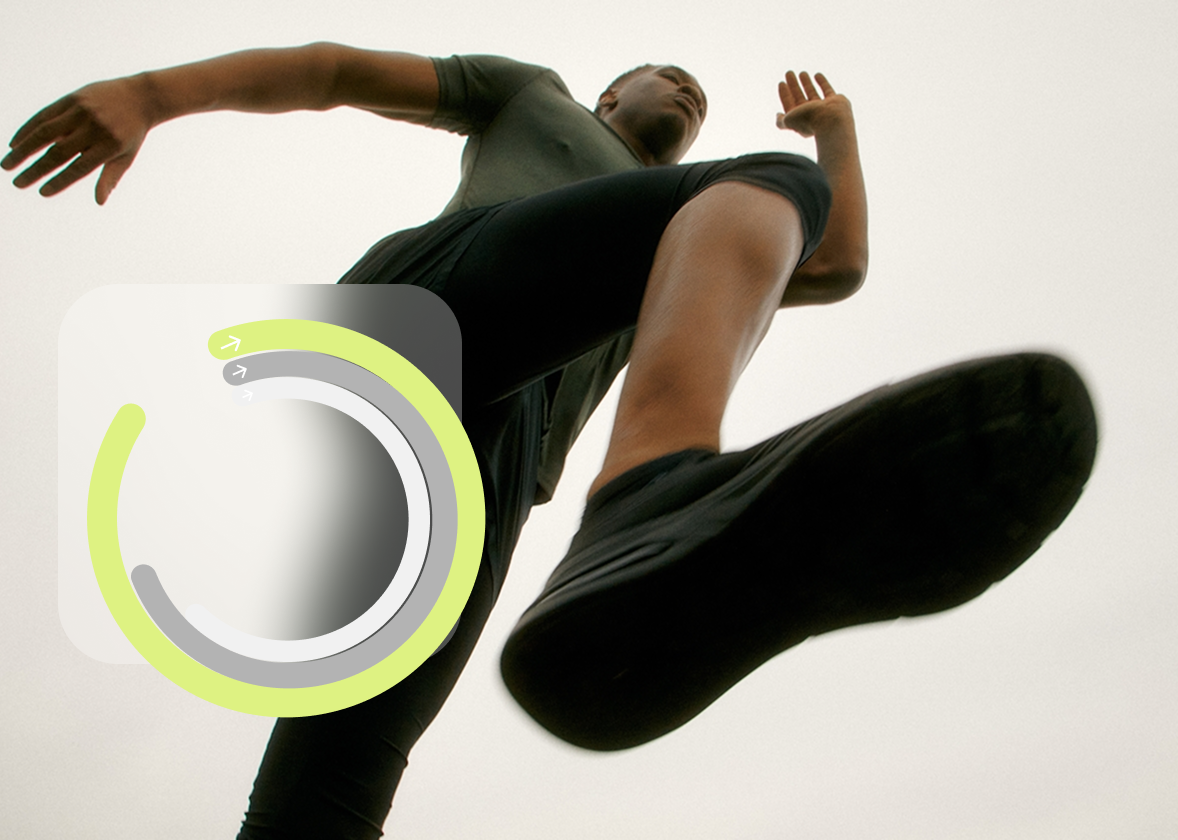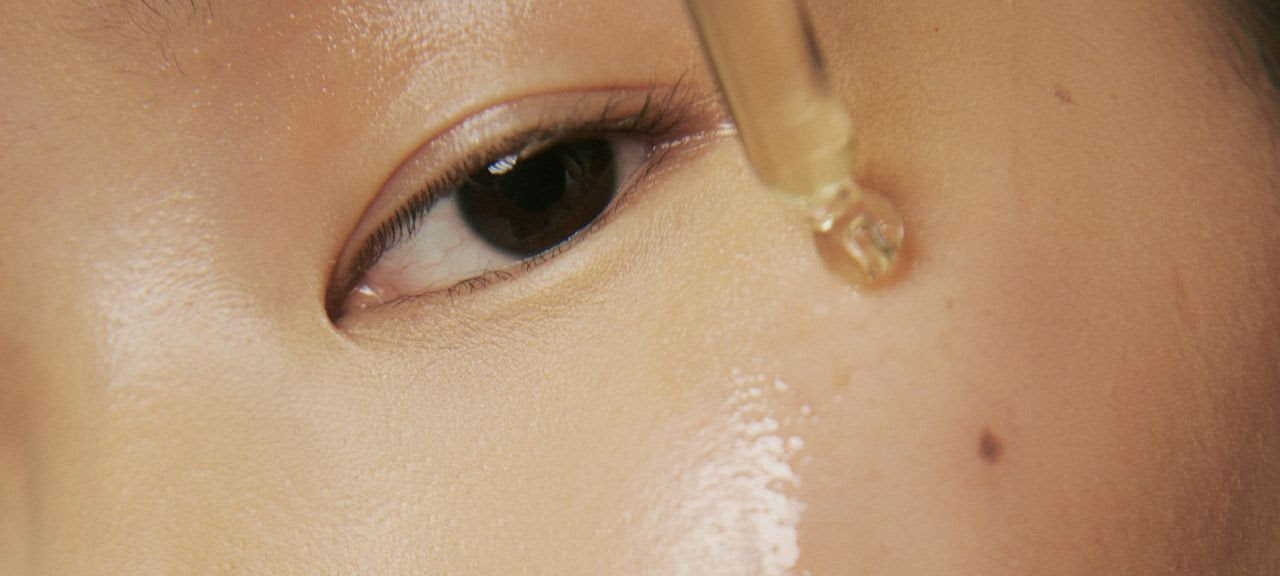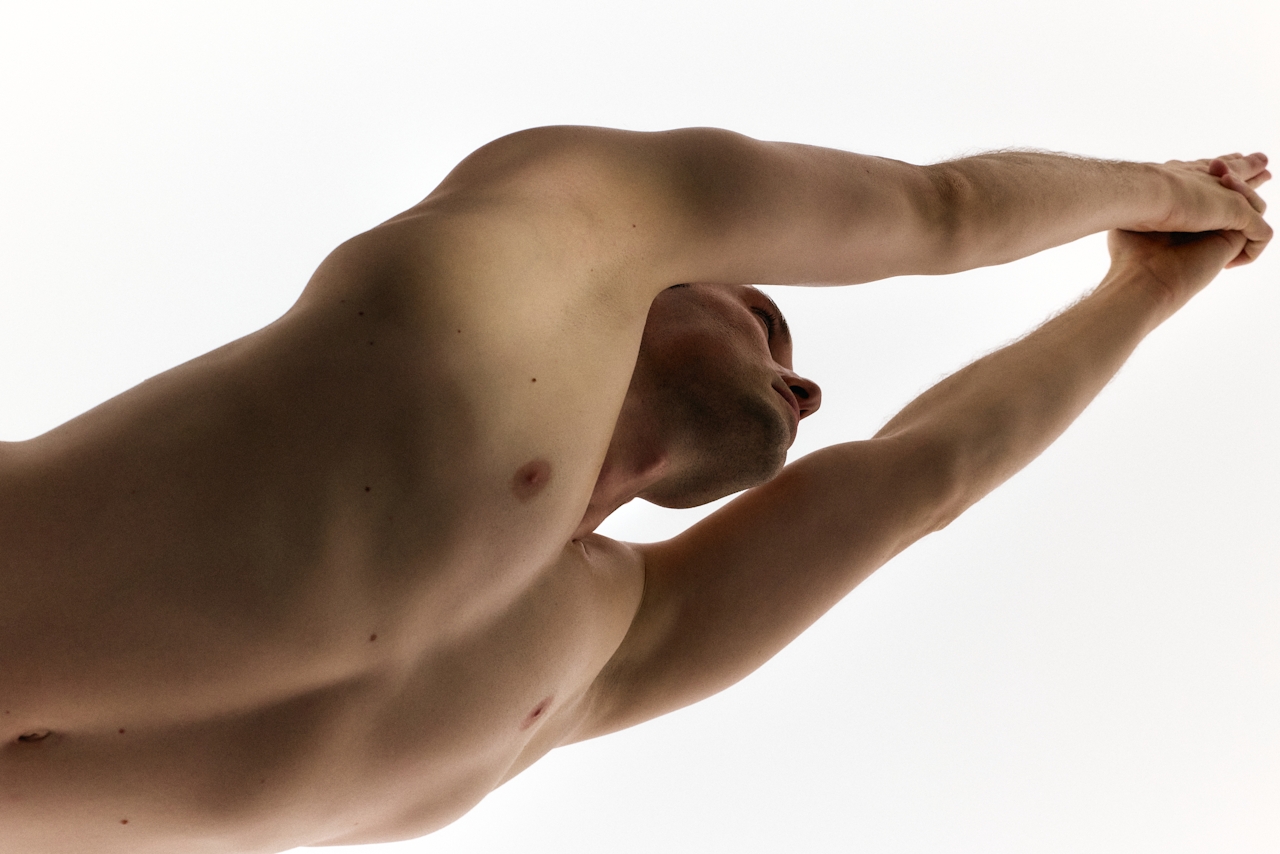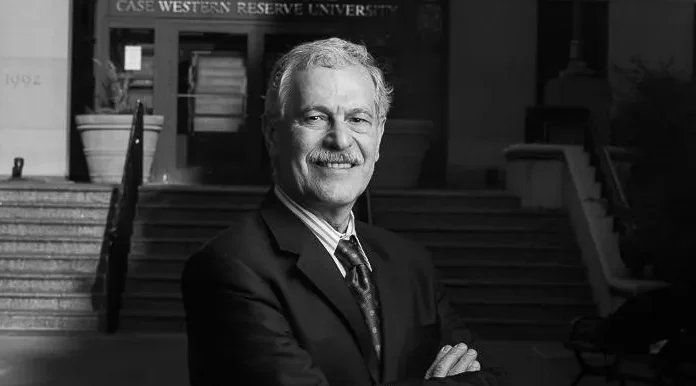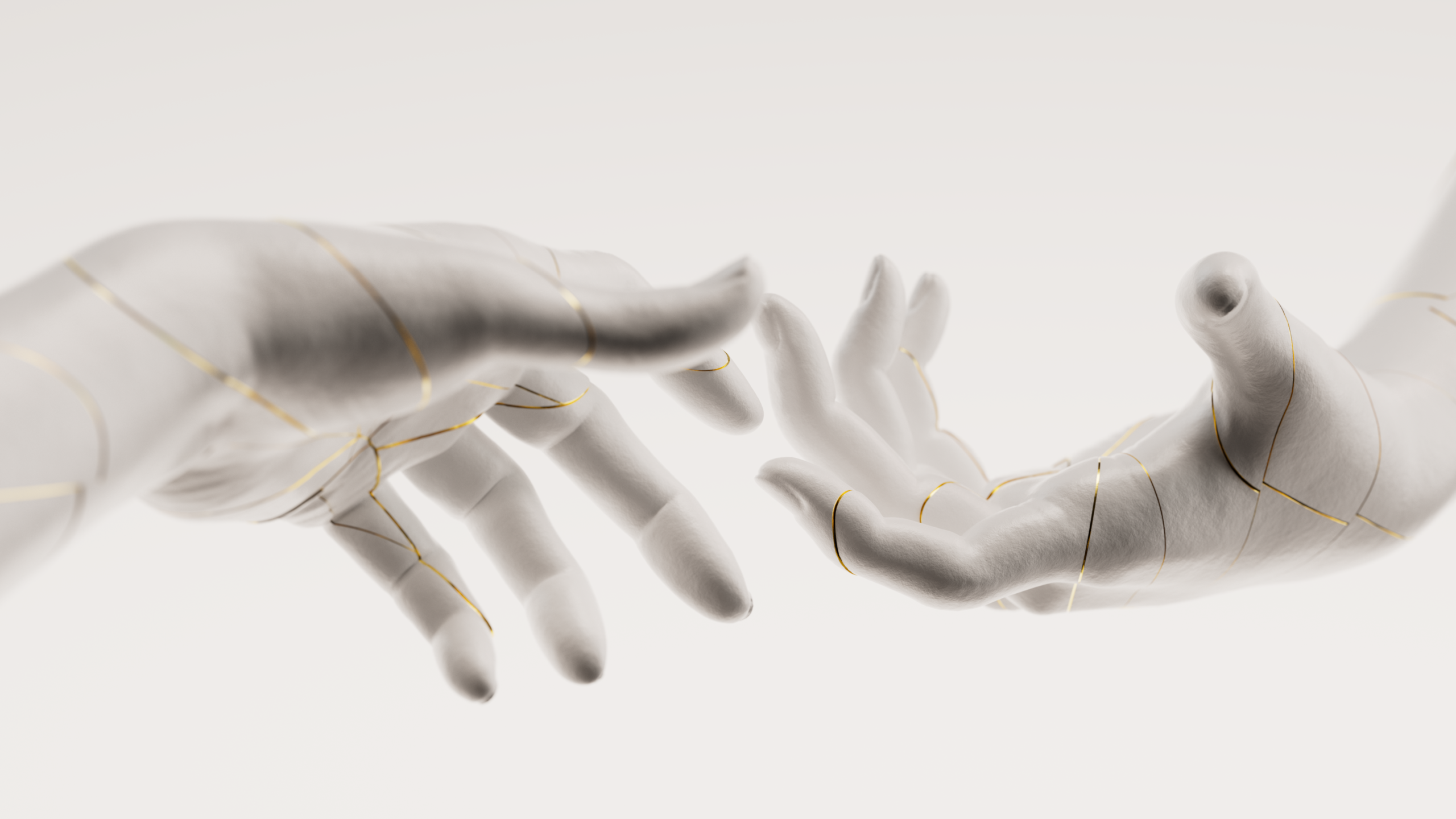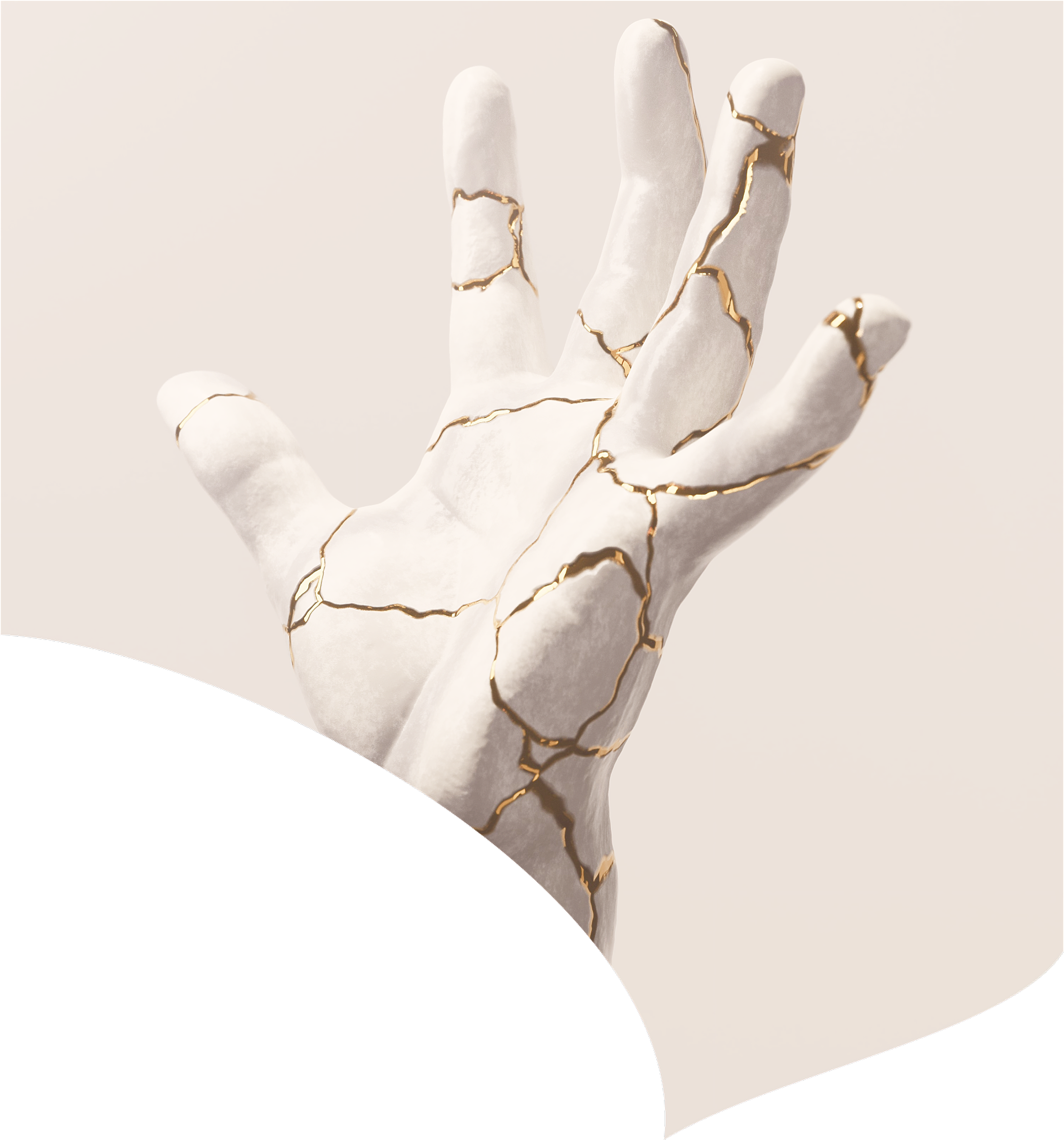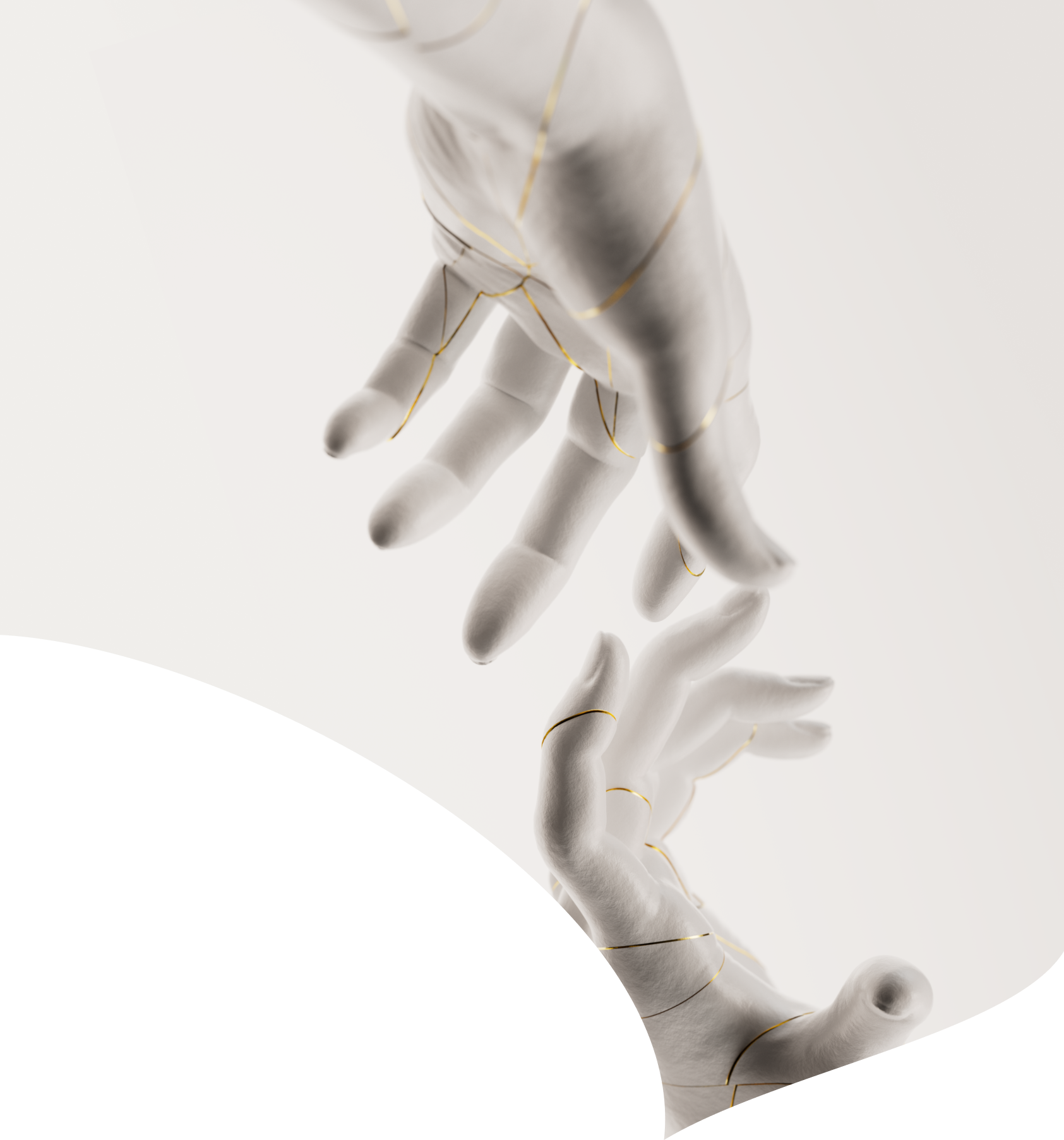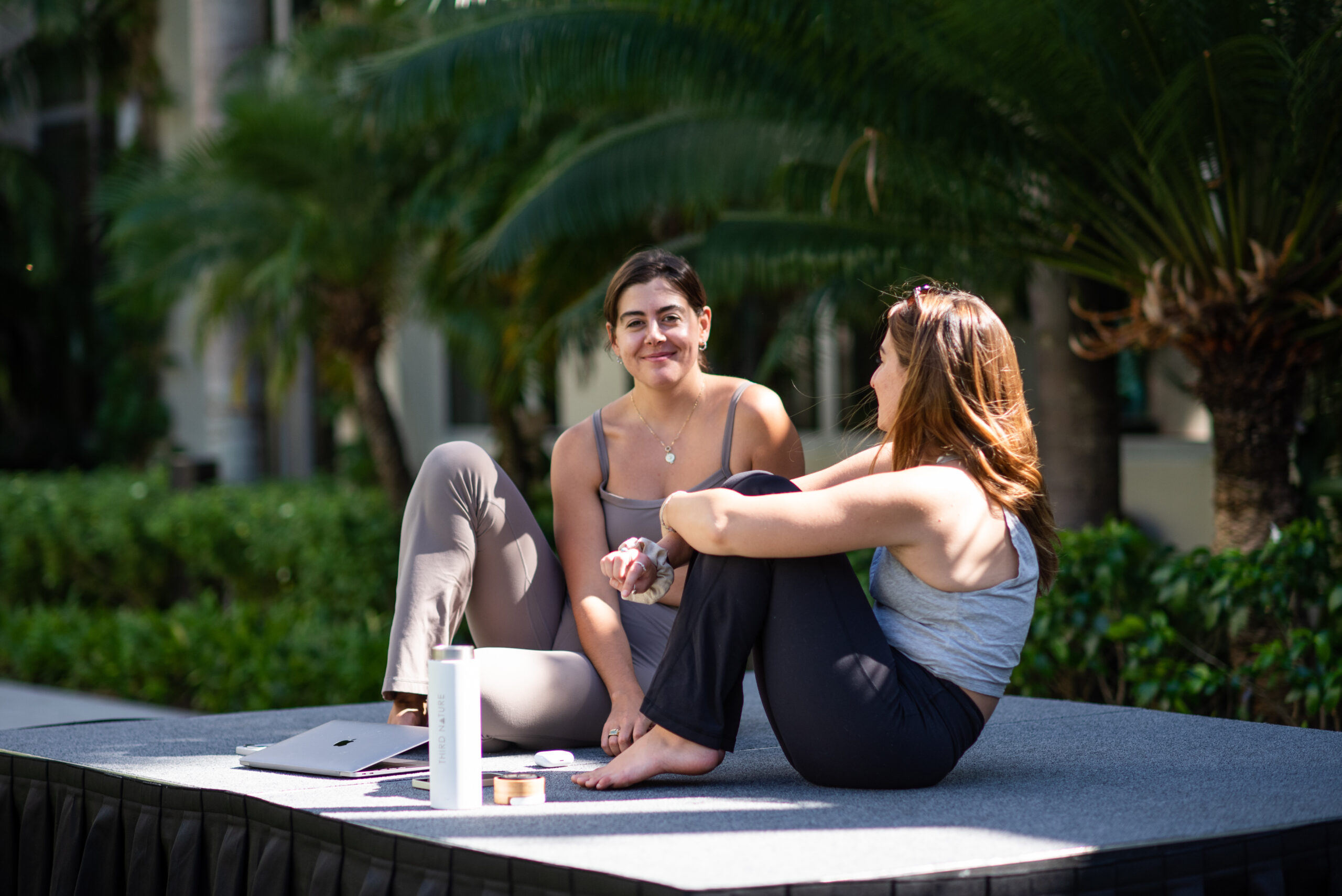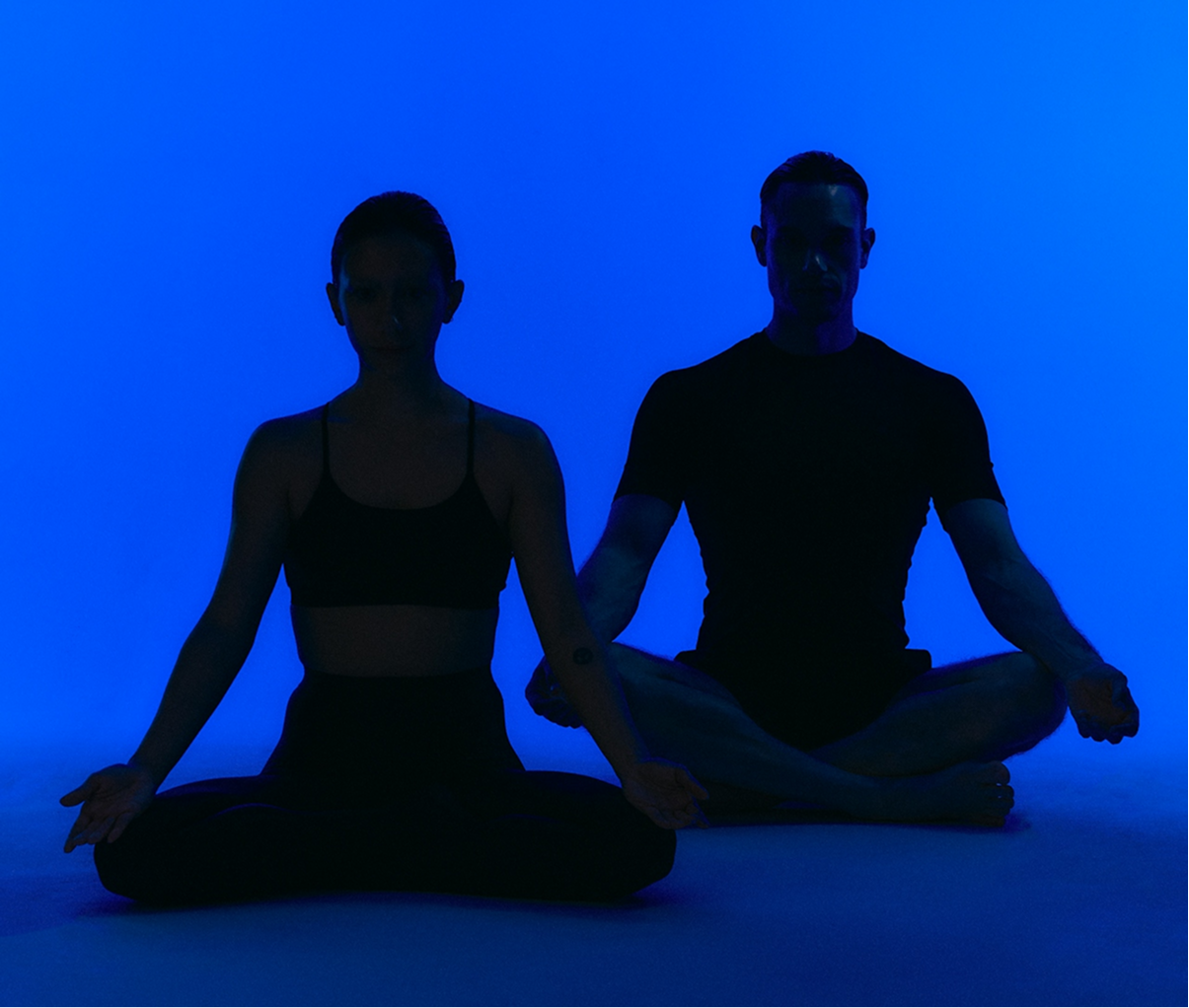
Let’s go deep into two ancient technologies that modern science keeps rediscovering: meditation and breathwork.
It’s amazing that something as primal as breathing—something we do 20,000 times a day without thinking—can anchor us into deep presence or trigger emotional and physiological states you’d normally expect from compounds or chemicals.
For thousands of years, these practices were treated as spiritual disciplines. Now, they’re being studied as biological ones. Neuroscientists can trace in real time how breath slows the heart, synchronizes brain waves, and reduces inflammation. fMRI scans show that meditation doesn’t just change brain activity; it changes brain structure.
In a world obsessed with more in every direction, these are tools for regulating your own system instead of being ruled by it.
We’re splitting this issue into two parts: meditation, then breathwork.
While they’re related, they do different things and can be used for different outcomes. Meditation trains the mind: attention, awareness, emotional regulation. Breathwork regulates the body: stress response, nervous system, and energy state. Together, they form a closed loop between brain and body.
What you think shapes how you breathe, and how you breathe shapes what you think.
And the data keeps proving what intuition has always known. A few minutes of stillness or deliberate breathing can change everything: your focus, your hormones, even your inflammation levels.
Let’s start with meditation.
Meditation
If you’re reading this, it’s likely that by now you know the more well-known benefits of meditation:
- Reduces anxiety and depression
- Improves awareness
- Helps emotional regulation
- Lessens overthinking
- Increases sense of well-being
These are all life-changing on their own. But there are some deeper ways meditation can impact you on the biological level.
Structural Brain Change: Grey Matter Growth
Studies show that participating in an 8-week mindfulness training program, such as Mindfulness-Based Stress Reduction (MBSR), produced measurable increases in grey matter concentration in the left hippocampus, an area tied to learning, memory, and emotional regulation.
This suggests that meditation isn’t just calming you down but physically changing your brain’s structure, something once thought impossible.
Cellular Aging: Telomere Length & Longevity Markers
Research links meditation to slower cellular aging: practitioners show longer leukocyte telomere length (TL), the protective DNA “end-caps” that shorten with stress and age. Meditation may help preserve these caps, offering a biological mechanism for aging more slowly and living longer.
Rapid Cognitive Upgrades: Focus & Attention, in Days
Even in beginners, just four days of meditation training improved executive attention, working memory, and visual-spatial processing compared to controls. You don’t need years of practice; cognitive benefits can emerge within days.
White Matter & Brain Connectivity: Faster Communication
Meditation can change white-matter structure (the brain’s wiring) within 2–4 weeks of practice. These shifts may explain why regular meditators report better emotional regulation, focus, and resilience.
Cardiovascular Health: Lower Risk of Heart Disease
Evidence suggests meditation can reduce cardiovascular risk factors and lower the likelihood of heart-disease-related hospitalization. It’s not just mental; it may be one of the most potent heart-protective daily habits.
Types of Meditation
There isn’t one right way to meditate. There are hundreds, developed across cultures and centuries, each tuning a different frequency of awareness, training different parts of the brain, and producing unique physiological effects.
At its core, all meditation is the art of returning—catching the wandering mind and bringing it back, over and over, until attention itself becomes steady. But different traditions approach this training through different doorways.
We’ll discuss the most modern practices that fall into three main categories: Focused Attention, Open Monitoring, and Loving-Kindness (Metta).
Focused Attention
The simplest form is focused attention—choosing a single anchor and staying with it. The breath. A candle flame. A sound. Each time the mind drifts (and it will, constantly at first), you notice and gently return. That moment of return is the practice.
You're following your breath, suddenly realize you're planning dinner, and guide attention back to the inhale.
Simple, but not easy.
Over time, this repetition strengthens the prefrontal cortex, quiets the default mode network (the mental loop of memories, worries, and self-talk), and builds the neural circuitry for sustained attention. You're not suppressing thoughts; you're recognizing distraction sooner and recovering faster.
Transcendental Meditation belongs here too, using a Sanskrit mantra as its anchor. The repetition settles mental activity until even the mantra fades, leaving what practitioners call “restful alertness.” EEG studies show high coherence in alpha brain waves—deeply rested, but alert.
Open Monitoring
Where focused attention narrows, open monitoring expands. Instead of one anchor, you observe the entire field of experience—thoughts, sensations, emotions, sounds—without grasping or pushing away. It's the difference between being inside the storm and watching it pass from above.
This style lights up the anterior cingulate cortex and insula, regions tied to interoception and emotional regulation. The mind learns to rest in awareness itself rather than getting caught in its contents. Artists and scientists often gravitate here; it's where insights arise.
Vipassana (a Buddhist insight meditation focused on observing the changing nature of mind and body) bridges both worlds. It begins with focused attention on breath but evolves into this open awareness, training you to see impermanence directly—how sensations and thoughts constantly appear, shift, and dissolve. You move from top-down control (directing attention) to bottom-up awareness (observing without interference).
Loving-Kindness (Metta)
Metta takes a different path entirely. Instead of training attention or awareness, it trains the heart. You repeat phrases of goodwill: "May I be happy, may I be peaceful, may I feel safe." First, you direct this toward yourself like water filling a cup, then overflowing outward to others.
It sounds soft, but the biology is profound: increased positive emotion, enhanced empathy, improved vagal tone (your nervous system's resilience to stress). Over time, it literally rewires your defensive patterns into warmth, connection and openness.
What’s remarkable about Metta is how quickly it can shift perception. The same world, the same people, even the same challenges start to feel softer, more workable. Compassion stops being an idea and becomes a felt experience—a steady sense of safety, understanding, and care.
It’s impossible to overstate how quietly powerful it is when love stops being something you seek and starts being something you embody.
Manifestation Meditation
So far we’ve explored meditation as training for attention, awareness, and emotional regulation. But there’s another approach gaining massive traction: using meditative focus as a kind of mental rehearsal space for specific life outcomes.
It’s not new. Practices of visualization and inner rehearsal appear throughout ancient traditions—from Tibetan Buddhists envisioning deities in exquisite detail, to Vedic sages using focused imagery for healing and transformation. What’s changed is the framing: today these methods are reinterpreted for modern goals like performance, creativity, and personal growth.
Manifestation meditation flips the traditional script. Instead of observing what is, you visualize what could be. You build detailed mental scenarios of desired outcomes, engaging all senses until the imagined feels almost real. Athletes have used this for decades; now it’s everywhere, from boardrooms to yoga studios.
The neuroscience is fascinating. The brain can’t fully distinguish between vividly imagined experiences and real ones. Mental rehearsal activates the same neural pathways as actual performance. Visualizing yourself giving a confident presentation fires similar circuits to doing it, making the real thing feel more familiar when it arrives.
The practice typically combines focused visualization with elevated emotional states—feeling the gratitude, joy, or relief of the imagined outcome as if it’s already happened. Some traditions add affirmations or specific breathing patterns to amplify the effect.
Where it gets controversial is the leap from “mental rehearsal improves performance” (well-documented) to “visualization attracts external circumstances” (unproven). The first is neuroscience; the second is metaphysics.
What’s clear is that regular visualization can shift attention toward opportunities, increase motivation, and reduce anxiety around goals—psychological changes that genuinely affect outcomes. Whether there’s something more mystical at work depends on your worldview.
Like other forms, it’s still training attention, just oriented toward possibility rather than present-moment awareness.
The Common Thread
No matter which style you practice, you're strengthening the ability to be aware without resistance. Each tradition offers its own doorway, but they lead to the same room—a mind that can rest in the present, observe without reactivity, and return when it wanders. The more you practice this return, the steadier your attention becomes.
Meditation is simple but not easy. Most people struggle with staying quiet, being still, and sitting with their thoughts. But difficulty starting and staying consistent isn't a bug; it's the feature. That resistance is exactly what you're training against.
But thankfully there’s no shortage of ways to learn any of the styles mentioned above—teachers, recordings, retreats, apps. Don’t get stuck choosing. Find the one that feels right and get started.
Breathwork
If meditation trains the mind to be steady, breathwork trains the body to shift states. This is the other half of the equation, using breath as a direct line to your nervous system. No waiting, no practice required. Change how you breathe for two minutes and you change your biochemistry. Speed it up, you're energized. Slow it down, you're calm. Push it far enough, you'll enter altered states.
While meditation is about observing without interfering, breathwork is pure intervention. You're deliberately manipulating oxygen and CO2 levels, vagal tone, and blood pH to trigger specific physiological responses. It's like having a control panel for your autonomic nervous system—the part that's supposedly automatic.
Pranayama yogis, Tibetan tummo practitioners, and Taoist masters (among others) all knew this. They discovered that breath could induce everything from blissful calm to explosive energy to mystical states. Now we have the science to explain why: you're literally changing the chemistry of your blood and the firing patterns of your brain.
Modern breathwork ranges from the subtle to the extreme. On one end, there's box breathing to stay cool under pressure. On the other, there's holotropic breathing that can trigger experiences as intense as psychedelics. Different tools for different moments.
The beautiful thing about breathwork is its immediacy. Meditation might take weeks to show structural brain changes. But you can feel breathwork in seconds.
You might already be aware of the well-known benefits of breathwork:
- Reduces stress and anxiety
- Improves focus and concentration
- Lowers heart rate and blood pressure
- Enhances sleep quality
- Increases energy and alertness
But did you know that breathwork can do the following?
Mood Enhancement: Breathwork Outperforms Meditation
In a Stanford study, just five minutes of daily breathwork for one month improved mood more than mindfulness meditation. Emphasizing long, slow exhales produced the greatest lift in positive affect and the steepest drop in anxiety.
The more consistently people practiced, the stronger the benefits became, with improvements that continued to build over time.
Neural Activation: Breathwork Rewires the Brain in Minutes
Slow, deep breathing measurably activates key regions of the brain, including the hippocampus (memory), hypothalamus (stress regulation), and vagus nerve (heart rate, inflammation, relaxation). These effects occur within minutes, showing that breath doesn’t just calm the mind, it actively reshapes the brain–body connection.
Emotional Regulation: Clinically Significant Reductions in Stress and Depression
A large meta-analysis found that breathwork interventions led to measurable decreases in stress, anxiety, and depression—moderate to robust effect sizes comparable to psychotherapy and medication.
Natural Pain Relief: Activating the Body’s Own Painkillers
Slow, deep breathing can activate the body’s natural systems for calming pain and stress. By stimulating the vagus nerve and engaging the parasympathetic nervous system, this practice reduces muscle tension, slows heart rate, and lowers levels of stress hormones like cortisol.
These effects help decrease both physical discomfort and emotional distress, fostering a state of calm that supports pain relief and recovery.
The Different Types of Breathwork
Breathwork isn’t a single practice but a spectrum—from subtle, steady rhythms that anchor focus to deep, accelerated techniques that can shake loose emotion or alter consciousness entirely. Each style works on the same instrument (the breath) but plays it differently. Some calm the system, some charge it, and some dissolve the boundaries between body and mind altogether.
There are many ways to work with the breath, but we’ll look at a handful that are especially effective and accessible.
Box Breathing (Square Breathing)
Box breathing is the simplest, most tactical form of nervous system control. It’s used by Navy SEALs, surgeons, and executives before high-stakes moments for one reason: it works immediately.
How to Do It
Inhale for 4 seconds, hold for 4, exhale for 4, hold for 4. Complete 4–6 cycles to reset quickly, or continue for 2–5 minutes for deeper calm.
Physiologically, those pauses at the top and bottom of each breath prevent hyperventilation, stabilize oxygen and CO₂ balance, and cue the vagus nerve to slow your heart rate. It’s a direct signal to the brainstem that you’re safe, breaking the feedback loop of stress. Over time, this rhythmic balance trains your body to tolerate pressure without triggering fight-or-flight.
It’s not flashy or mystical. It’s precision breathing for real-world composure—a technique that can transform an anxious moment into grounded presence anywhere: a meeting, a traffic jam, or a hard conversation.
Best for calm, focus, and composure under pressure.
4-7-8 Breathing
This pattern, popularized by Dr. Andrew Weil, is often called a “natural tranquilizer for the nervous system.” It’s simple, powerful, and ideal before bed or whenever the mind won’t slow down.
How to Do It
Inhale through your nose for 4 seconds, hold your breath for 7 seconds, then exhale slowly through your mouth for 8 seconds. Repeat for 4–8 cycles.
Physiologically, the long breath-hold increases CO₂ concentration in the blood, improving oxygen delivery once you exhale. The extended exhale activates the vagus nerve, slows the heart rate, and lowers blood pressure, signaling the body that it’s time to rest. Within minutes, the nervous system begins to downshift toward sleep.
Where box breathing is a performance tool for composure under pressure, 4-7-8 is a recovery tool for deep relaxation. It doesn’t stabilize; it sedates.
It’s one of the most reliable patterns for quieting the mind and easing tension before bed or after a stressful day.
Best for sleep, anxiety, and relaxation.
Coherent Breathing (6 Breaths Per Minute)
Coherent breathing is one of the most well-researched and effective ways to regulate stress and emotion. It’s gentle, steady, and easy to sustain so you can synchronize your breath, heart, and nervous system into one coherent rhythm.
How to Do It
Inhale slowly through your nose for 5 seconds, then exhale for 5 seconds—for about six breaths per minute. Keep the rhythm smooth, relaxed, and continuous. Start with 2–3 minutes and gradually extend to 10 or more for full effect.
This simple rhythm enhances heart-rate variability (HRV)—one of the clearest markers of emotional resilience and nervous-system health. Each inhale slightly accelerates the heartbeat, and each exhale slows it down, creating a natural oscillation between activation and relaxation. Over time, this balance strengthens vagal tone, stabilizes blood pressure, and trains your system to recover more efficiently from stress.
Coherent breathing cultivates equilibrium. It doesn’t sedate; it harmonizes. You’re building a flexible nervous system, one that can shift smoothly between effort and ease, focus and rest.
Best for emotional balance, stress resilience, and steady focus.
Cyclic Sighing
A recent Stanford study found that cyclic sighing improved mood and reduced anxiety more effectively than mindfulness meditation with benefits that continued to build the longer participants practiced. It’s one of the fastest, most accessible ways to reset physiology and restore calm.
How to Do It
Inhale deeply through the nose about as much as you can, followed by a short “top-up” inhale to completely fill the lungs. Then exhale slowly and fully through the mouth, letting the breath fall out naturally. Repeat for 3–5 minutes, or whenever you need a rapid emotional reset.
The double inhale reinflates tiny air sacs (alveoli) in the lungs that tend to collapse under stress or shallow breathing, improving oxygen exchange and lung efficiency. The long exhale activates the parasympathetic system and slows the heart rate, sending a powerful “safety” signal to the brain. Together, this sequence lowers respiratory rate, reduces anxiety, and elevates mood in minutes.
Each breath restores pressure balance in the lungs and discharges accumulated tension from the body. It’s the physiology of a long sigh, amplified, repeated, and harnessed with intent.
Best for rapid mood elevation, emotional reset, and anxiety relief.
Holotropic Breathing
Developed in the 1970s by psychiatrist Stanislav Grof, holotropic breathwork was designed to access expanded states of consciousness without drugs. It merges psychology, physiology, and spirituality using sustained, connected breathing to open the body’s deepest emotional and energetic layers.
How to Do It
Disclaimer: This should only be done with a trained facilitator, as the intensity of the practice can bring up strong physical, emotional, or psychological responses that require skilled guidance and integration afterward.
Breathe continuously and deeply through the mouth without pauses between inhales and exhales. The rhythm is circular and intense—full, fluid, and uninterrupted.
Sessions typically last 60–120 minutes and are often accompanied by evocative music and emotional support for integration afterward.
Physiologically, this technique alters oxygen and carbon dioxide levels in the blood, shifting blood flow within the brain. The limbic system (which processes emotion and memory) becomes more active, while the default mode network—the part of the brain tied to self-narrative and ego—quiets. The result is a state similar to that reached through deep meditation or psychedelic therapy: expanded awareness, catharsis, and profound insight.
Unlike gentler techniques like box or coherent breathing, holotropic breathwork is intentionally destabilizing. It bypasses the rational mind, allowing repressed memories, emotion, and somatic tension to surface and resolve through expression and release.
It’s not an everyday practice—it’s a deep dive. Done safely, it can help integrate trauma, accelerate personal growth, and reconnect you to something larger than yourself.
Best for emotional release, trauma integration, and accessing altered or transpersonal states.
Alternate Nostril Breathing (Nadi Shodhana)
One of the oldest forms of pranayama (the ancient yogic practice of controlling and regulating the breath), Nadi Shodhana—which translates to “channel purification”—is designed to balance the body’s energy systems and synchronize the two hemispheres of the brain. It’s a grounding, centering practice that brings instant calm without sedation.
How to Do It
Sit comfortably with a straight spine. Using your right hand, rest your index and middle fingers between your eyebrows. Close your right nostril with your thumb and inhale through your left nostril. Then close the left nostril with your ring finger and exhale through the right. Inhale again through the right, switch, and exhale through the left. That’s one full cycle. Continue for 5–10 minutes, keeping the breath slow, smooth, and silent.
Physiologically, alternating nostrils modulates airflow between the nasal passages, which are linked to different autonomic functions—the left nostril is associated with parasympathetic activity (calm and restoration), and the right nostril with sympathetic activity (alertness and energy). The gentle switching trains balance between the two, bringing the nervous system into equilibrium.
Neuroimaging studies suggest the practice harmonizes activity between the brain’s hemispheres and increases alpha brain waves, associated with relaxed focus and mental clarity. It’s an antidote to scattered attention—a simple way to feel clear, present, and emotionally centered.
Alternate nostril breathing is subtle, but its effects accumulate. Done daily, it refines attention, steadies emotion, and restores the quiet rhythm beneath thought.
Best for balancing energy, calming the mind, and improving mental clarity.
The Return
These aren't just wellness trends or spiritual bypasses. Meditation and breathwork are fundamental human technologies, as essential as language. They're how we interface with our own operating system.
You already have everything you need. The breath in your lungs right now. The awareness reading these words. No equipment, no certification required. Just the decision to stop being a passenger in your own nervous system and start driving.
The research is clear: a few minutes of practice changes your brain structure, your stress hormones, your immune markers, your emotional resilience. But the real shift is simpler than that. It's the difference between reacting and responding. Between being hijacked by every thought, feeling, or trigger and choosing to stand back and witness.
In a world designed to dysregulate you—to keep you scrolling, consuming, anxious, and reactive—these practices are an act of rebellion. They're how you reclaim sovereignty over your own state.
The monks and yogis were right. So were the Navy SEALs and the neuroscientists. Consciousness is trainable. The nervous system is hackable. And the tools have been hiding in plain sight for thousands of years.
The only moment that actually exists is this one. Might as well learn to inhabit it.
Disclaimer: This newsletter is provided for educational and informational purposes only and does not constitute providing medical advice or professional services. The information provided should not be used for diagnosing or treating a health problem or disease, and those seeking personal medical advice should consult with a licensed physician.

December 8, 2025
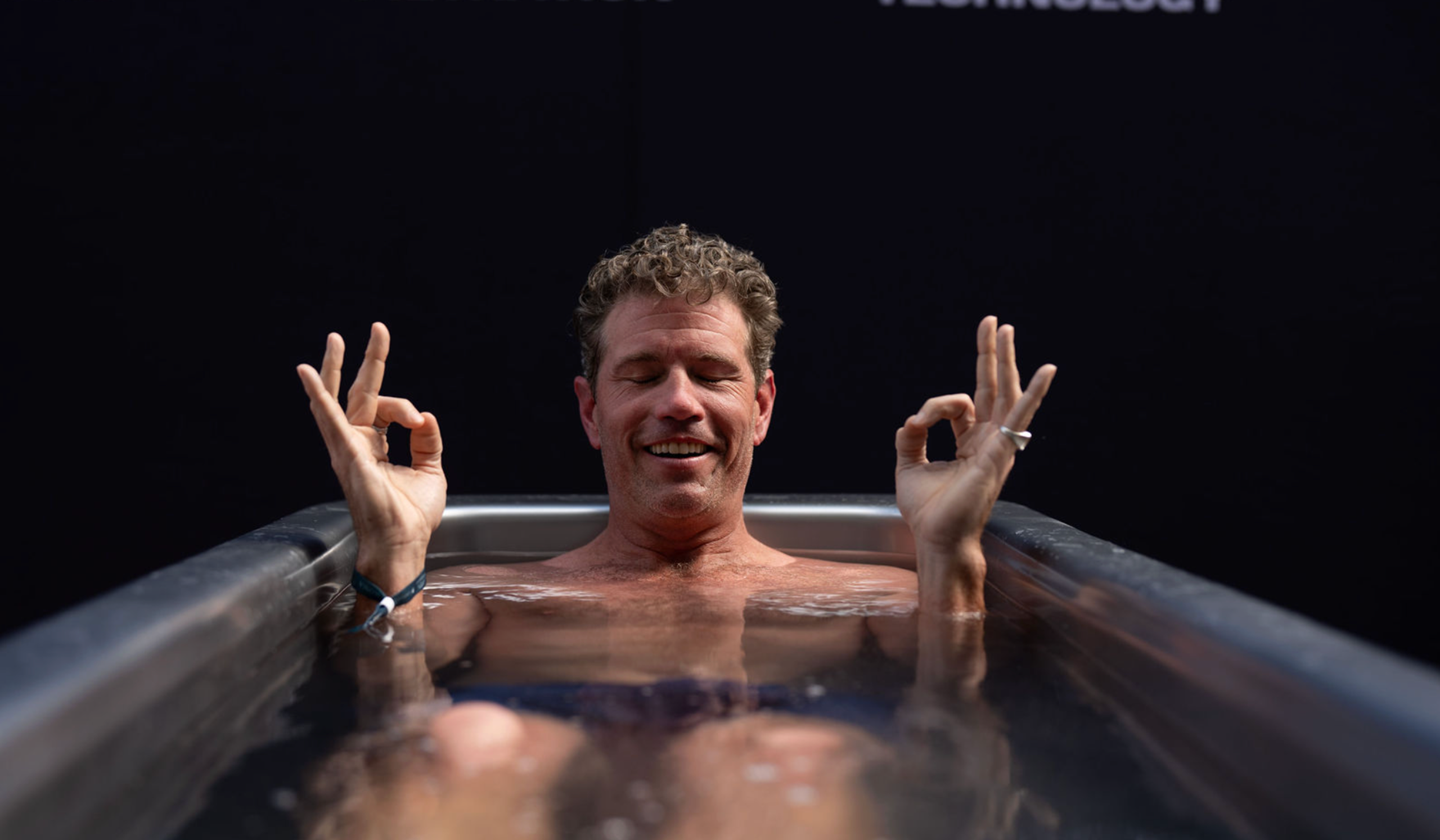
December 5, 2025
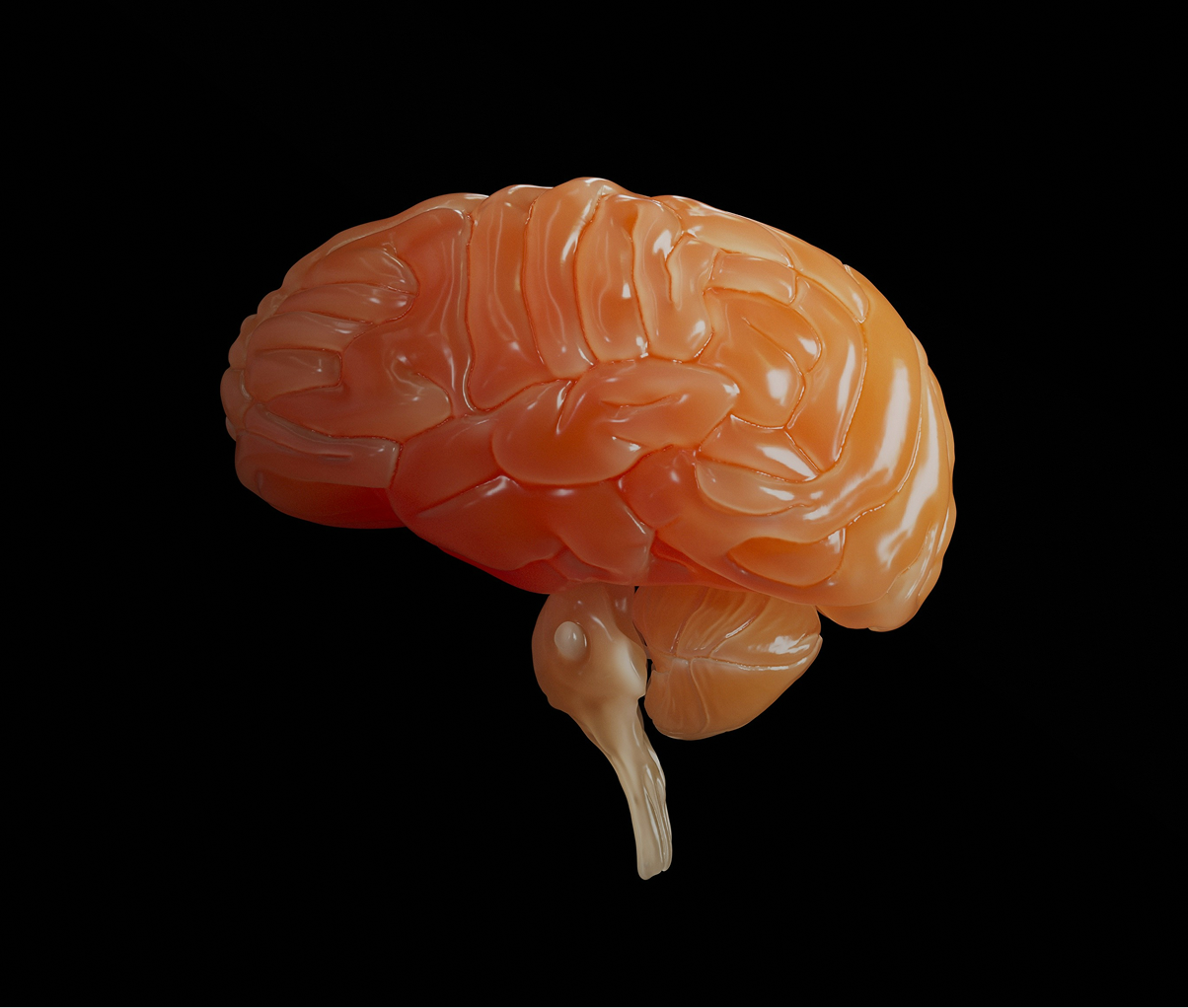
November 21, 2025

November 14, 2025

November 14, 2025

November 7, 2025
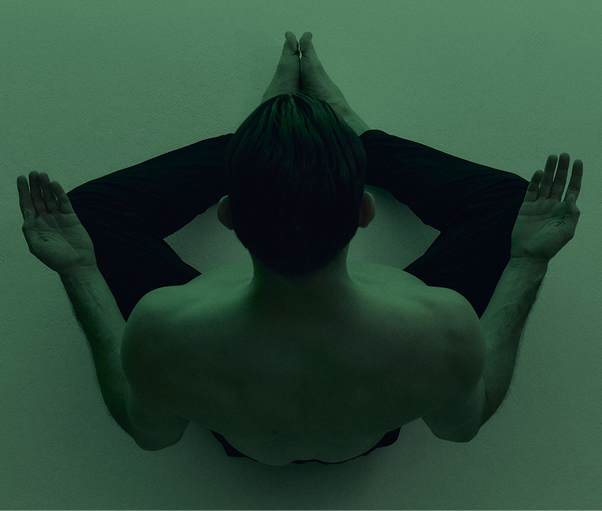
October 31, 2025

October 24, 2025

October 17, 2025
